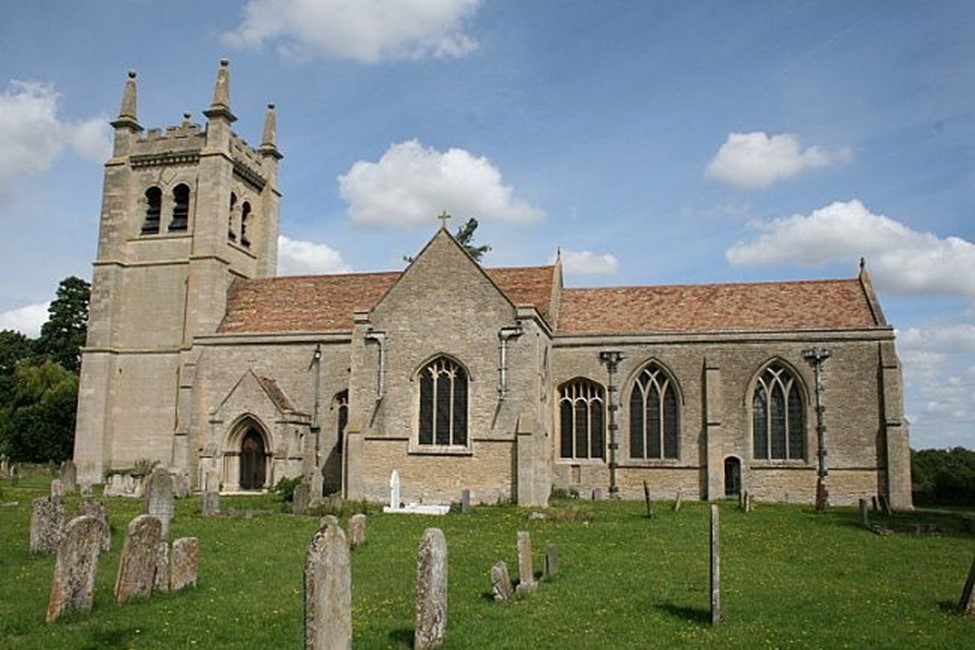PRESS RELEASE FROM THE NATIONAL CHURCHES TRUST
Funding boost for St Mary the Virgin, Leighton Bromswold
 A much-loved Cambridgeshire church is to share in a £1.5 million funding payout thanks to an investment in church heritage by the Heritage Stimulus Fund, part of the Government’s Culture Recovery Fund.
A much-loved Cambridgeshire church is to share in a £1.5 million funding payout thanks to an investment in church heritage by the Heritage Stimulus Fund, part of the Government’s Culture Recovery Fund.
A £79,128 Grant will help fund work to the Grade I listed St Mary the Virgin and keep the church at the heart of the local community. St Mary the Virgin is one of 17 churches across the country receiving Heritage Stimulus Fund grants in this round of funding.
The funding comes from the Heritage Stimulus Fund, part of the Government's Culture Recovery Fund. Administered on behalf of the Department for Digital, Culture, Media and Sport (DCMS) by Historic England, the grants are aimed to support and bolster local economies and jobs across the country.
Money from the government's £2 billion Culture Recovery Fund is intended to open up heritage and the benefits it brings to everyone.
Claire Walker, CEO National Churches Trust said:
"Historic local places of worship are a vital part of our national heritage, but sadly, a shortage of available funding means that many are in a very poor state of repair."
"The £1.5 million investment in our grants scheme by the Government’s Culture Recovery Fund is incredibly good news. It comes on top of £2 million from the Culture Recovery Fund awarded to us in October 2021, money which is already funding urgent heritage repairs at 15 churches in England.”
“The funding is a vote of confidence in the future of historic church buildings and a recognition of their importance to society."
Huw Edwards, Vice-President of the National Churches Trust said:
"Local churches, chapels and meeting houses are the beating heart of local communities. It's great news that St Mary the Virgin is being helped on the recommendation of the National Churches Trust with funding from the Culture Recovery Fund. This will help protect heritage and keep churches open so that they can continue to support local people."
Duncan Wilson, Historic England's Chief Executive, said:
"Funding from the government's Culture Recovery Fund is hugely welcome at a time when the people and organisations who look after our vast and varied array of heritage urgently need support to carry out essential repairs. We are delighted that further historic sites and projects will benefit from this funding. It will add to the vital work of the Heritage Stimulus Fund in supporting irreplaceable heritage sites and places of worship across the country.”
The church
Mary’s Leighton, Bromswold was first built in 1248 and extended in 1310 into a traditional two isle, two transept village church. By 1598 the roof and walls had caved in and it could not be used for worship. In 1606 attempts were made to rebuild the church but was stopped due to lack of funds.
The poet Revd George Herbert was given the prebendary of Leighton Ecclesia in 1626 and he vowed to rebuild the church. Towards this end, he sought the support of the Ferrer brothers who had founded the adjacent Giddings community and also many of his friends and this enabled sufficient funding to start the rebuilding which was completed 1632.
The north aisle was demolished, and new north and south walls built to extend the line of the chancel, which reduced the space available for the seated congregation and turned it into a pronounced cruciform shape. It is believed that the altar would have been at the centre of the cross-reflecting George Herbert’s poem ‘The Cross.’ The nave and transepts are cross gabled with squatter projecting wings.
The west and south walls were rebuilt, and the original window mullions and tracery restored.
The most significant feature in St Mary’s Nave are the almost unique remaining twin pulpits from the Jacobean period. The equal height twin pulpits, one for reading from the Prayer Book (on the south), the other for preaching (on the north).
These twin pulpits are in substantially original condition, with their original hinges and locks. The church also contains one of the most complete set of Jacobean pews and woodwork in England in the Chancel, nave and transepts. In line with Herbert's views, the Chancel screen is low enabling the congregation to see the proceedings. A tower was completed in 1634-1641 and the church has been preserved as George Herbert had designed to this day. It was updated by Ewan Christian in 1868 retaining all the Jacobean features but adding, sympathetically, replica woodwork.
The project
The grant will facilitate repairs to the Nave, north transept, and porches roofs.
About the National Churches Trust
The National Churches Trust is the leading national independent charity concerned with the protection and welfare of churches, chapels and meeting houses throughout the United Kingdom. We aim to:
a) Provide grants for the repair, maintenance and modernisation of church buildings
b) Act as a catalyst to improve and bring more resources to the management of church buildings
c) Promote the value of church buildings to the community at large
For more information visit www.nationalchurchestrust.org
